
Lot 457
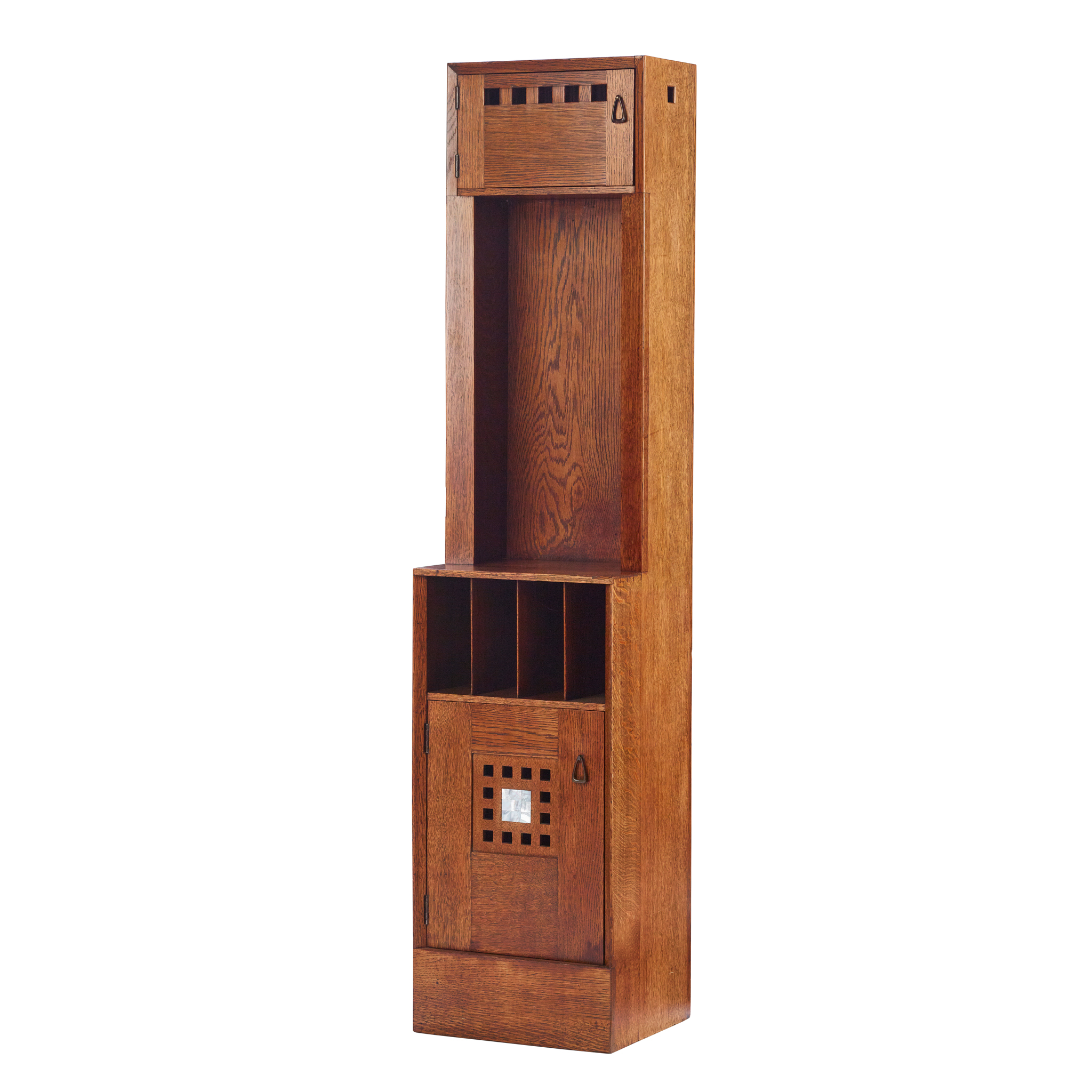
CHARLES RENNIE MACKINTOSH (1868-1928)
CABINET FOR THE BLUE BEDROOM, HOUS’ HILL, 1904
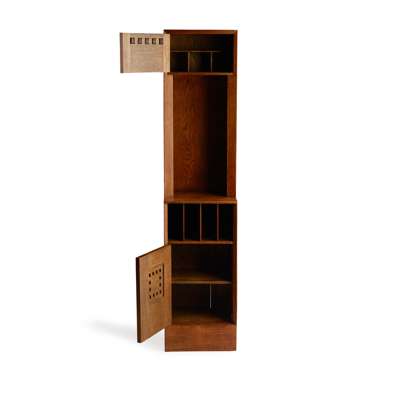
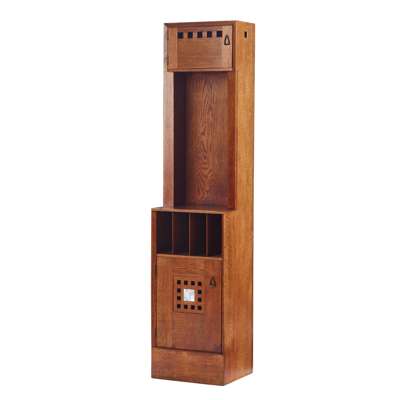
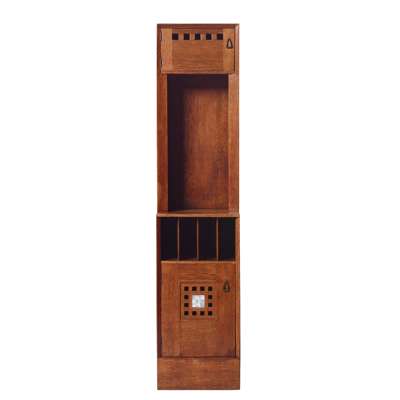
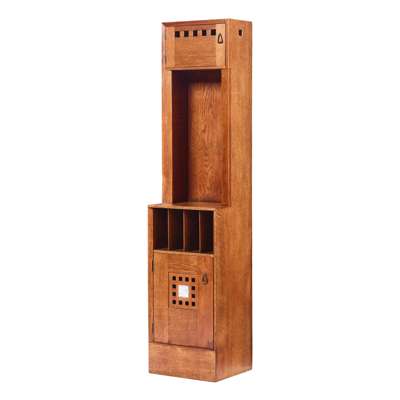
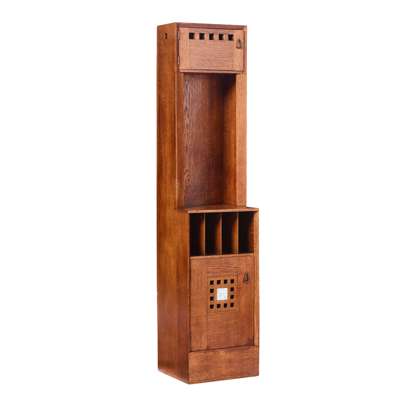
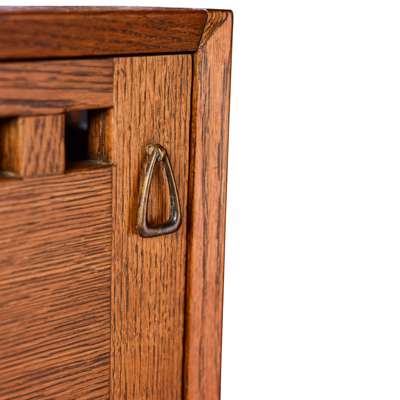
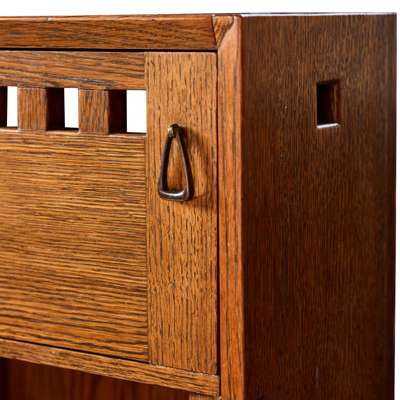
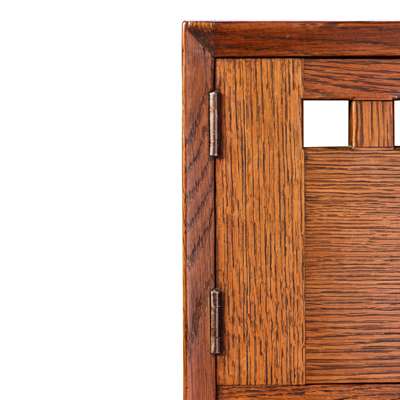


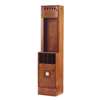

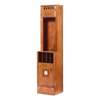
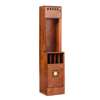
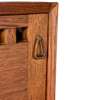
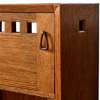
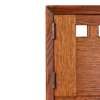
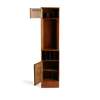
Auction: Day Two inc FL Griggs : A Cotswold Legacy | Lots 334 to 654 | Thursday 16th October from 10am
Description
oak, with brass handles and mother-of-pearl inlay
Dimensions
38cm wide, 168cm high, 33.6cm deep
Footnote
Literature: Billcliffe, R. Charles Rennie Mackintosh: The Complete Furniture, Furniture Drawings & Interior Designs, Cameron & Hollis 2009, pp. 195-197, 1904.J period photograph of the Blue Bedroom illus.; pp. 207 and 208, 1904.65 'Design and layout of furniture for the Blue Bedroom'; 1904.67 'Cabinet for the Blue Bedroom, Hous'hill'; 1904.67 illus.
Arwas V. Art Nouveau in Britain from Mackintosh to Liberty: The Birth of a Style, Andreas Papadakis, 2000, p.41, where the pair to this cabinet is illustrated.
In 1903–04, following the completion of their collaboration on the Willow Tearooms in Glasgow for the prominent patron Catherine Cranston, Charles Rennie Mackintosh was commissioned to redesign and refurnish her residence, Hous’hill, situated on the city’s outskirts. At this juncture in his career, Mackintosh was entering a particularly experimental phase, marked by his sustained engagement with innovative materials, textures, and forms, and by his exploration of how such contrasting elements might be integrated to create a coherent spatial environment. The designs developed at Hous’hill proved formative for Mackintosh’s subsequent furniture and interior projects, culminating in his major commission for the second phase of The Glasgow School of Art in 1910.
Prior to his work at Hous’hill, many of Mackintosh’s interiors were characterised by their restrained, white-painted schemes: elegant white furniture was set against luminous white spaces punctuated by coloured glass details or stylised stencilled roses. Although this aesthetic persisted in aspects of Hous’hill, the Blue Bedroom diverged from such established practice. Here, the furnishings were stained or waxed rather than painted, thereby articulating and disrupting the otherwise unremarkable geometry of the rectangular room. Decoration was employed sparingly: stylised organic motifs and the Glasgow rose appear only in limited instances, most notably in the stained-glass panels of a series of basket wall lights strategically positioned throughout the space.
The present cabinet, one of a pair created for the Blue Bedroom, exemplifies Mackintosh’s evolving preference for geometric abstraction and material subtlety. Rigid and rectilinear in form, the tall cabinet is distinguished by a sequence of vertical rectangular recesses intended for the storage of books and periodicals, their rhythm accentuated by the fine vertical graining of the timber. Ornament is restrained, confined primarily to the precise arrangement of cut-out squares and a panel of inlaid mother-of-pearl squares arranged in a grid of nine. A single curved stained-glass panel—originally inserted into the central alcove but now lost in this example—softened this geometric severity, demonstrating Mackintosh’s sensitivity to the interplay of linear and organic form. By staining the cabinet rather than painting it white, Mackintosh allowed the timber itself to become an integral component of its decoration. Contrasting textures of glass, brass, mother-of-pearl, and timber grain were orchestrated in harmony, producing an innovative design that achieves an elegant yet restrained level of ornamentation. Other examples of furniture in the bedroom pursued similar ideas, creating a visually striking interior scheme that would anticipate and shape some of Mackintosh’s later commissions.
The pair of bedside cabinets was executed by Francis Smith, one of Mackintosh’s regular cabinetmakers. While Mackintosh’s original plans positioned the cabinets immediately adjacent to either side of the bed, period photographs reveal that Cranston ultimately altered the layout, placing them slightly further apart and relocating the chairs that had originally been intended to flank them.

















